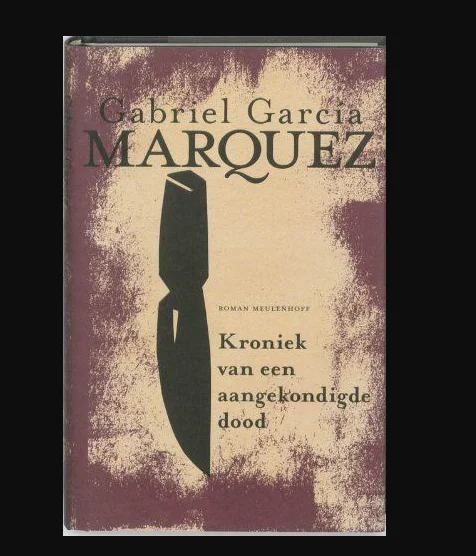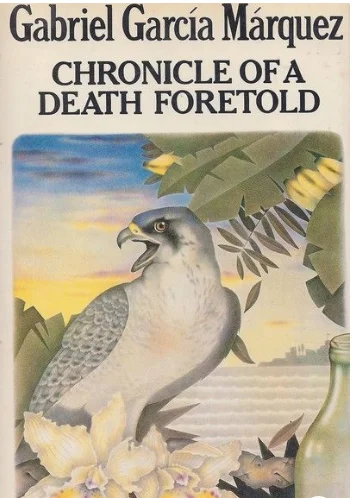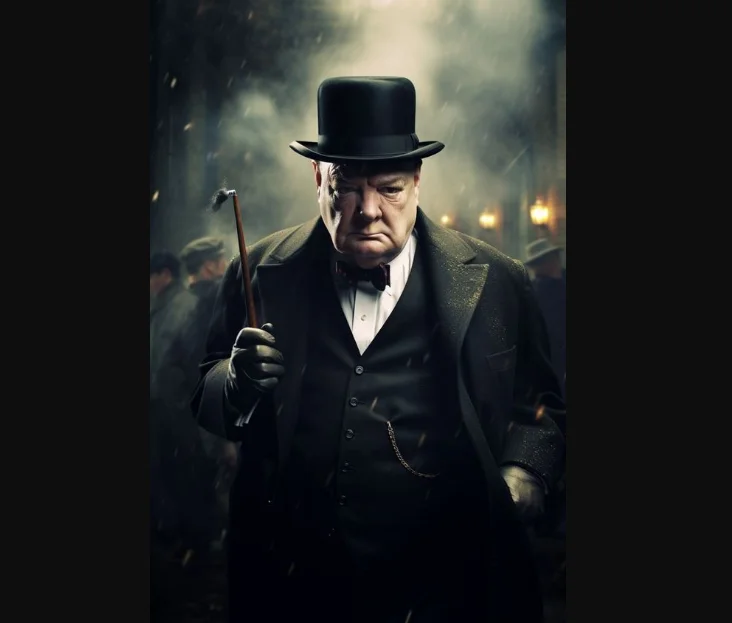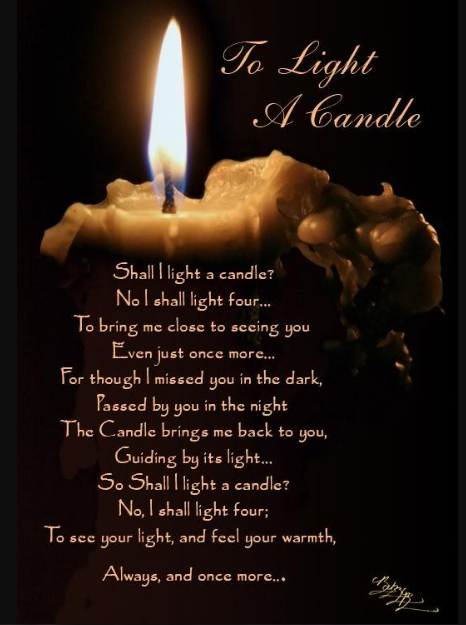Chronicle of a Death Foretold Book
Chronicle of a Death Foretold Book-Step into the captivating world of Gabriel García Márquez’s mesmerizing novella, Chronicle of a Death Foretold.
Introduction to the Book Chronicle of a Death Foretold
With its gripping narrative and thought-provoking themes, this literary masterpiece takes readers on a journey through love, honor, and tragedy in a small Latin American town. As we delve into the pages of this compelling story, we uncover secrets, untangle webs of deceit, and ultimately confront the chilling reality that some deaths are foretold long before they occur.
Intrigued? You should be! Join us as we explore the background, summary, analysis of key themes and characters in Chronicle of a Death Foretold. Discover why this book continues to captivate readers worldwide with its powerful storytelling and unforgettable imagery. So grab your favorite beverage, settle into your reading nook, and prepare to embark on an unforgettable literary adventure.
Background and Context
The background and context of a book often play a crucial role in understanding its themes, characters, and overall narrative. In the case of Gabriel García Márquez’s Chronicle of a Death Foretold, it is important to delve into the historical backdrop against which the story takes place.
Set in a small Colombian town during the 1950s, this novella reflects the cultural norms and traditions prevalent at that time. It explores themes such as honor, duty, gender roles, and societal expectations. Marquez masterfully weaves these elements into his storytelling to create an immersive experience for readers.
Additionally, it is worth noting that Marquez himself was deeply influenced by magical realism a literary style blending reality with fantastical elements in his writing. This influence is evident throughout Chronicle of a Death Foretold as he merges factual events with mystical undertones.
Furthermore, understanding Colombia’s history can shed light on certain aspects of the story. The country had been plagued by violence and political turmoil for decades leading up to Marquez’s writing. These factors contribute to the sense of inevitability surrounding Santiago Nasar’s tragic fate.
By considering both the historical context and Marquez’s unique narrative approach in Chronicle of a Death Foretold, readers gain deeper insights into its underlying messages about honor codes gone awry and how society shapes individual actions.
What is the summary of Chronicle of a Death Foretold?
In the small town of Colombia, a shocking and tragic event unfolds in Gabriel García Márquez’s Chronicle of a Death Foretold. The story follows the murder of Santiago Nasar, a young man who is brutally killed by the Vicario twins. The narrative takes on the form of a pseudo-journalistic reconstruction, adding an air of mystery and suspense to the tale.
The plot revolves around Angela Vicario, who marries Bayardo San Roman but is returned to her family on their wedding night due to her lack of virginity. In order to restore their honor, Angela’s brothers are compelled to seek revenge by killing Santiago Nasar . A man they believe took advantage of their sister.
As we delve deeper into this gripping novella, we encounter themes such as honor, guilt, fate, and societal expectations. Marquez seamlessly blends reality with magical elements that enhance the story’s impact.
Through his rich characterization and vivid descriptions, Marquez presents us with complex characters like Santiago Nasar himself – portrayed as charismatic yet flawed. Each character plays a significant role in shaping the events leading up to Santiago’s untimely demise.
Chronicle of a Death Foretold not only captivates readers with its compelling narrative but also raises thought-provoking questions about morality and justice in society.
This summary merely scratches the surface of this literary masterpiece; it is filled with twists and turns that will keep you hooked until its haunting conclusion.
Analysis of Key Themes
In Gabriel García Márquez’s Chronicle of a Death Foretold, the author explores several key themes that contribute to the overall depth and complexity of the story. One prominent theme is the power of honor and societal expectations. The characters in the novel are driven by a strong sense of honor, which ultimately leads to tragedy.
Another significant theme is fate and inevitability. From the very beginning, it becomes clear that Santiago Nasar’s death was foretold, hence the title. This idea of predestined events adds an element of tension and suspense throughout the narrative.
Márquez also delves into themes such as hypocrisy and deception within society. The town where the story takes place is filled with gossipers who know about Angela Vicario’s loss of virginity before her marriage but fail to act upon it until it’s too late.
Additionally, gender roles play a crucial role in shaping character motivations and actions in Chronicle of a Death Foretold. Women are expected to adhere to societal norms while men are given more freedom.
Márquez explores guilt and responsibility as central themes in his work. Each character grapples with their own culpability in Santiago Nasar’s murder, highlighting how individuals can be complicit or directly involved in tragic events.
These key themes intertwine throughout Márquez’s novella creating a thought-provoking exploration of human nature, morality, and social constructs within a small Colombian town.
Character Analysis
Santiago Nasar, the central character of Chronicle of a Death Foretold, is a complex individual whose life and death leave an indelible mark on the reader’s mind. Described as handsome and well-liked by many in his town, Santiago appears to be an innocent victim caught in a web of fate.
Angela Vicario, on the other hand, is a young woman whose actions set the tragic events in motion. As she accuses Santiago of taking her virginity before her marriage to Bayardo San Roman, Angela becomes both protagonist and antagonist in this tale. Her motivations remain ambiguous throughout the story.
Bayardo San Roman is another intriguing figure who plays a significant role in shaping the narrative. Initially seen as wealthy and charming, he ultimately reveals himself to be manipulative and cold-hearted.
The Vicario twins – Pablo and Pedro – stand out for their unwavering determination to carry out their mission, regardless of its morality or consequences. They become symbols of honor within their community while also embodying themes of toxic masculinity.
Colonel Aponte represents authority figures who turn a blind eye to injustice due to social pressures or personal interests. His failure to prevent Santiago’s murder reflects systemic flaws within society.
Through these diverse characters, Gabriel García Márquez explores themes such as honor, gender roles, societal expectations, and the destructive power of gossip. Each character adds depth and complexity to this haunting tale that lingers long after reading it.
In Chronicle of a Death Foretold,’s rich tapestry unfolds through vivid characterization that captures human nature at its most vulnerable moments.
Significance and Impact of the Book
Gabriel García Márquez’s Chronicle of a Death Foretold holds immense significance in the literary world. This captivating novella delves into themes of honor, guilt, and fate with such depth that it leaves an indelible mark on its readers.
One notable aspect of the book is Márquez’s unique narrative style. Through a pseudo-journalistic reconstruction, he presents multiple perspectives on the events leading up to Santiago Nasar’s tragic death. This approach creates a sense of suspense and intrigue as readers piece together the puzzle alongside the characters.
Furthermore, Chronicle of a Death Foretold explores cultural norms and traditions prevalent in Latin American society. The story takes place in a small town where honor is deeply ingrained in its inhabitants’ lives. Márquez sheds light on how societal pressure can lead to devastating consequences.
The impact of this novella extends beyond its genre. It serves as commentary on human nature itself – our tendency to conform, our innate flaws, and our capacity for both good and evil.
Márquez’s masterful storytelling has left an enduring impression on readers worldwide. His vivid descriptions transport us into this fictional world while also shedding light on universal truths about humanity.
Chronicle of a Death Foretold stands out not only for its gripping plot but also for its exploration of complex themes relevant to all societies. Its significance lies in challenging readers to question their own beliefs and actions within the context of honor, morality, and justice.
What is the main idea of Chronicle of a Death Foretold?
The main idea of Chronicle of a Death Foretold revolves around the concept of fate and how it influences the lives of individuals within a close-knit community. Gabriel García Márquez explores themes such as honor, tradition, and societal pressure through his vivid storytelling.
In this novella, Márquez skillfully unravels the events leading up to Santiago Nasar’s tragic death, highlighting the interconnectedness between characters and their roles in shaping destiny. The narrative is driven by a sense of inevitability, as if every action was predetermined long before it occurred.
Márquez challenges traditional notions of morality, presenting a morally ambiguous society where honor takes precedence over justice. The Vicario twins’ pursuit of vengeance for their sister Angela’s lost virginity reflects deeply ingrained cultural values that dictate strict punishment for those who violate societal norms.
Through intricate characterization, Márquez delves into the complexity of human behavior and its consequences. Each character contributes to an atmosphere filled with tension and suspicion. Their motivations are explored with depth and nuance, shedding light on the intricacies of human nature.
Chronicle of a Death Foretold serves as a commentary on collective guilt and complicity within communities. It raises questions about personal responsibility versus external pressures and highlights how societal expectations can shape individual actions.
By examining these themes against the backdrop of a small town consumed by gossip and secrets, Márquez invites readers to reflect on universal truths about human existence – our vulnerability to fate’s whimsy and our capacity for both heroism and tragedy.
What is the true story of Chronicle of a Death Foretold?
When it comes to Gabriel García Márquez’s Chronicle of a Death Foretold, the line between reality and fiction may blur. The true story behind this novella is as intriguing as its plot. Inspired by an actual event that occurred in Colombia, Márquez masterfully weaves together facts and imagination.
In 1951, two brothers named Pedro and Pablo Vicario killed Santiago Nasar in the town of Sucre. The motive? To restore their sister’s honor after she claimed Santiago had taken her virginity before marriage. However, what makes this tragic tale even more captivating is the fact that almost everyone in the town knew about the impending murder but did nothing to prevent it.
Márquez himself was influenced by his journalist background when reconstructing this fascinating narrative. He interviewed witnesses and collected testimonies to create a pseudo-journalistic account of events leading up to Santiago’s untimely demise.
While some details may be fictionalized for storytelling purposes, Márquez stays true to the essence of the real-life incident. Through his vivid descriptions and meticulous attention to detail, he brings us closer to understanding not only the crime itself but also the social dynamics at play in a small Latin American community.
The intertwining themes of honor, fate, responsibility, and morality are explored throughout Chronicle of a Death Foretold – all stemming from this hauntingly true story. As readers delve into this literary masterpiece, they are forced to question societal norms and reflect on their own roles as bystanders or active participants when faced with injustice.
So dive into Chronicles of a Death Foretold with an open mind witness not just one man’s tragedy but also contemplate larger truths about human nature within these pages.
What is the universal theme of Chronicle of a Death Foretold?
The universal theme of Chronicle of a Death Foretold revolves around the destructive power of honor and societal expectations. Through the tragic events that unfold, Gabriel García Márquez explores how deeply ingrained cultural norms can lead to devastating consequences.
In this small Colombian town, honor is valued above all else. The Vicario twins are driven by their duty to restore family honor after their sister’s perceived dishonor. They believe that killing Santiago Nasar is not only justified but necessary in order to cleanse their family name.
Márquez delves into the idea that blind adherence to tradition and societal expectations can lead individuals down a dangerous path. The characters in this story are trapped by the weight of expectations placed upon them, unable to break free from the preconceived notions of honor and reputation.
Furthermore, Márquez raises questions about truth, memory, and collective guilt. As the narrative unfolds through multiple perspectives and conflicting accounts, it becomes clear that there were many opportunities for someone to intervene or prevent Santiago Nasar’s death. Yet, society as a whole remains complicit in his demise due to fear or indifference.
Chronicle of a Death Foretold serves as a cautionary tale about blindly following societal norms without questioning their validity or considering the consequences. It highlights how these rigid structures can lead not only to personal tragedy but also perpetuate cycles of violence within communities.
In conclusion,
Gabriel García Márquez masterfully weaves together themes such as honor, tradition, collective guilt, and fate in Chronicle of a Death Foretold. This novella serves as both an exploration of human nature under social pressures and a critique on societies bound by outdated customs.
Through its vivid storytelling and thought-provoking analysis of complex characters’ motivations and actions, Chronicle of a Death Foretold continues to captivate readers worldwide with its timeless themes and powerful message about the dangers embedded within unquestioned traditions.







